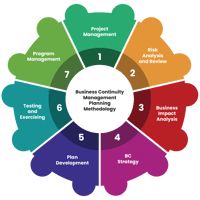eBook 2: Chapter 1
Implementing Business Continuity Management Planning Methodology for Kinderland
Introduction
![[BCM] [KL] [E2] [C1] Business Continuity Management Planning Methodology](https://no-cache.hubspot.com/cta/default/3893111/6a626e9c-95c6-4901-ab39-cad49253b32b.png)
![eBook Cover [BCM] [KL] [E2] [2D]](https://no-cache.hubspot.com/cta/default/3893111/c95c0e22-bc40-472a-8955-98e4befd4dae.png) The importance of a robust Business Continuity Management (BCM) program cannot be overstated, particularly in a rapidly changing environment like the early childhood education sector, where Kinderland Singapore operates.
The importance of a robust Business Continuity Management (BCM) program cannot be overstated, particularly in a rapidly changing environment like the early childhood education sector, where Kinderland Singapore operates.
As a leading provider of quality preschool education, Kinderland's primary responsibility is to ensure the safety and well-being of its students, employees, and stakeholders.
A well-structured BCM planning methodology will help Kinderland mitigate risks, maintain operations during disruptions, and recover swiftly from crises.
 This chapter outlines the seven-phase BCM planning methodology required by ISO 22301, the international standard for business continuity management.
This chapter outlines the seven-phase BCM planning methodology required by ISO 22301, the international standard for business continuity management.
These phases—Project Management (PM), Risk Analysis and Review (RAR), Business Impact Analysis (BIA), Business Continuity Strategy (BCS), Plan Development (PD), Testing and Exercising (TE), and Program Management (PgM)—will be specifically tailored to Kinderland's unique operational needs, ensuring that the continuity of critical processes is maintained, even in the face of unexpected disruptions.
1. Project Management (PM)
The first phase of the BCM planning methodology is Project Management (PM). This phase involves establishing the BCM project team, setting clear objectives, and defining the scope and timelines for the BCM program.
For Kinderland, this phase would include forming a dedicated BCM team comprising key stakeholders, such as senior management, Operations Managers, IT staff, and representatives from each of Kinderland’s childcare centres.
The team would be responsible for overseeing the BCM process and ensuring that all phases are executed effectively.
Specific Requirement for Kinderland
Ensure that the project charter clearly defines the roles and responsibilities of BCM team members, with a focus on maintaining continuity in educational operations, health and safety protocols, and communication channels with parents and stakeholders.
2. Risk Analysis and Review (RAR)
The Risk Analysis and Review (RAR) phase involves identifying potential risks that could disrupt Kinderland’s operations, assessing their likelihood and potential impact, and developing strategies to mitigate these risks.
This phase will involve reviewing environmental, technological, and operational threats, including natural disasters, pandemics, and cybersecurity breaches.
Specific Requirement for Kinderland
A comprehensive risk register should be developed, addressing risks related to child safety, regulatory compliance, facility management, and any other specific threats that might impact the operation of its centres. Regular risk reviews should be conducted to keep the risk profile current.
3. Business Impact Analysis (BIA)
The Business Impact Analysis (BIA) phase aims to identify the critical business functions of Kinderland that must be preserved in the event of a disruption.
This phase will assess the impact of a disruption on Kinderland's operations, focusing on childcare services, educational programs, parent communication, and facility management.
Specific Requirement for Kinderland
The BIA should prioritise the continuity of child care and educational services, and consider the potential impact of prolonged disruptions on students, families, and staff. The results of the BIA will help determine the recovery time objectives (RTO) and recovery point objectives (RPO) for these services.
4. Business Continuity Strategy (BCS)
Based on the findings of the BIA, the next phase is the development of a Business Continuity Strategy (BCS). This phase involves defining the strategies and solutions needed to maintain or recover critical business functions during a disruption.
For Kinderland, this could include remote learning solutions, emergency communication protocols, backup childcare services, and contingency plans for maintaining compliance with regulatory requirements.
Specific Requirement for Kinderland
The strategy must outline the use of technology, including online learning platforms, communication systems, and mobile solutions, to ensure the continuity of educational services during disruptions.
Additionally, it should prioritise the physical safety of students and staff during emergencies.
5. Plan Development (PD)
The Plan Development (PD) phase involves the creation of detailed continuity plans that outline how to implement the strategies identified in the BCS phase.
These plans should include step-by-step procedures for responding to various disruption scenarios, assigning specific roles and responsibilities, and establishing communication protocols.
Specific Requirement for Kinderland
Develop a Business Continuity Plan (BCP) that includes procedures for maintaining child safety, continuing educational programs, and communicating with parents during emergencies.
The plan should also include guidance on how to handle regulatory reporting and ensure compliance during disruptions.
6. Testing and Exercising (TE)
Once the plans are developed, it is crucial to test and exercise them regularly to ensure their effectiveness.
The Testing and Exercising (TE) phase involves conducting simulations and tabletop exercises to assess the effectiveness of the BCM plans under various scenarios.
These tests should involve all relevant stakeholders, including staff, parents, and emergency responders.
Specific Requirement for Kinderland
Organise regular fire drills, evacuation simulations, and remote learning exercises to ensure that staff and parents are prepared for emergencies.
These exercises should focus on real-life disruptions, such as a pandemic, natural disaster, or facility lockdown.
7. Program Management (PgM)
The final phase, Program Management (PgM), focuses on maintaining and continually improving the BCM program.
This phase involves regularly reviewing and updating the BCM plans, conducting periodic risk assessments, and ensuring that the BCM program aligns with Kinderland’s changing needs and external factors such as regulatory updates and industry best practices.
Specific Requirement for Kinderland
Establish a process for reviewing and updating the BCM plans annually, ensuring that any lessons learned from exercises or actual events are incorporated into the plans.
Regular communication with key stakeholders, including parents and regulatory bodies, should also be maintained to ensure transparency and alignment.
The Business Continuity Management (BCM) planning methodology is an ongoing process that requires the active involvement of all key stakeholders at Kinderland.
By following the seven-phase approach outlined in ISO 22301, Kinderland can ensure the resilience of its operations, safeguard its reputation, and continue to provide high-quality care and education to its students, even during times of crisis.
As the organisation continues to grow and evolve, it is essential to keep the BCM program dynamic and responsive to new risks and challenges.
By maintaining a proactive and well-prepared approach to business continuity, Kinderland can ensure the long-term success and sustainability of its operations, protecting the well-being of its students, staff, and the wider community.





![BCM E2 PM [Introduction BCM Planning Methodology] Banner](https://blog.bcm-institute.org/hs-fs/hubfs/BCM%20E2%20Blog%20Banner/BCM%20E2%20PM%20%5BIntroduction%20BCM%20Planning%20Methodology%5D%20Banner.png?width=1920&height=384&name=BCM%20E2%20PM%20%5BIntroduction%20BCM%20Planning%20Methodology%5D%20Banner.png)



![Register [BL-B-3]*](https://no-cache.hubspot.com/cta/default/3893111/ac6cf073-4cdd-4541-91ed-889f731d5076.png)



![FAQ [BL-B-3]](https://no-cache.hubspot.com/cta/default/3893111/b3824ba1-7aa1-4eb6-bef8-94f57121c5ae.png)
![Email to Sales Team [BCM Institute]](https://no-cache.hubspot.com/cta/default/3893111/3c53daeb-2836-4843-b0e0-645baee2ab9e.png)





